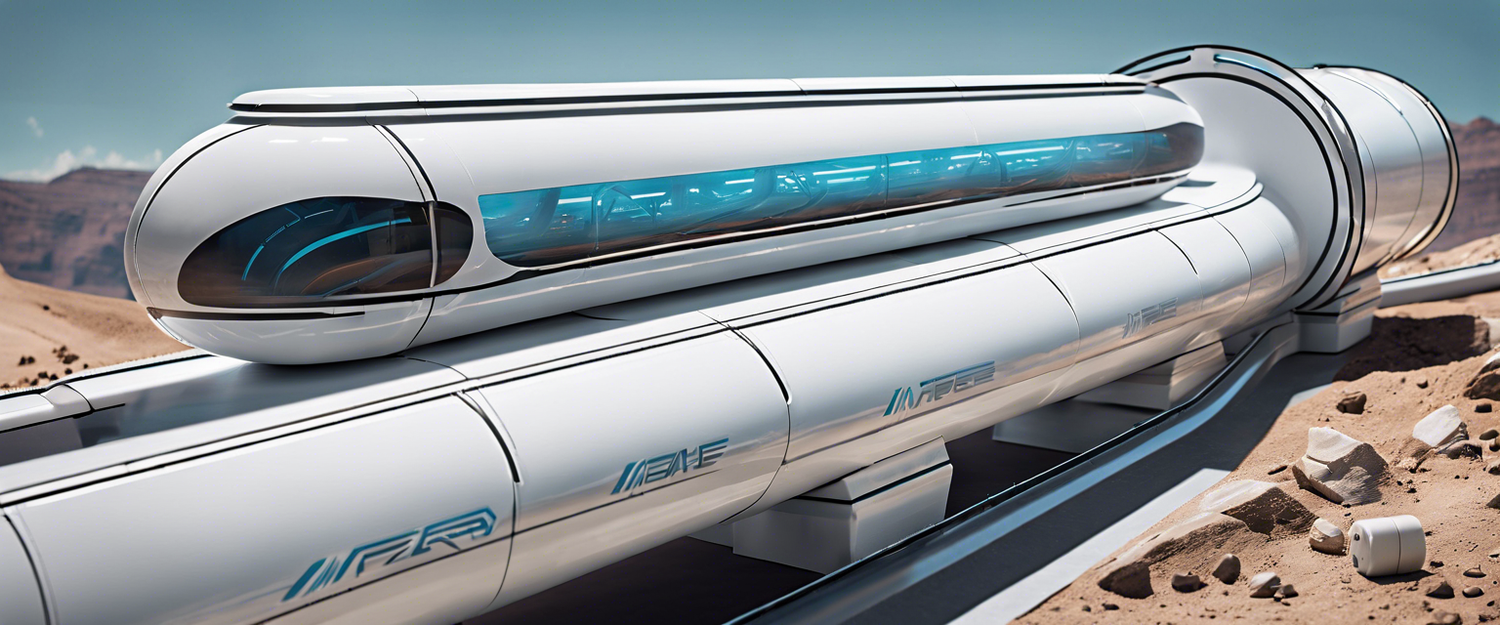The Resurgence of the Hyperloop: Staying Alive in Switzerland
About a year ago, a headline read, "The hyperloop is dead for real this time,” referencing the shutdown of Hyperloop One, a leader in the pursuit of Elon Musk's ambitious vision of ultra-fast, tube-based travel. However, the hyperloop concept refuses to fade away completely, manifesting instead as a 1/12th scale model in Lausanne, Switzerland.
A Dream of Speed: The Genesis of Hyperloop
Elon Musk's groundbreaking 2013 white paper proposed a revolutionary mode of travel characterized by aerodynamic aluminum capsules filled with passengers or cargo. These capsules were designed to move through nearly airless tubes at astounding speeds of up to 760mph. Musk envisioned a system that could connect cities by constructing raised or underground tubes, leading to massive changes in transportation.
Testing the Waters: The LIMITLESS Project
The latest development in hyperloop technology is taking shape in Lausanne, where a circular test track of 120 meters is currently operational. Supported by the Federal Institute of Technology Lausanne (EPFL), the School of Business and Engineering Vaud (HEIG-VD), and Swisspod Technologies, the team recently announced a significant milestone: conducting the longest hyperloop test to date, reaching a distance of 11.8 km (7.3 miles) at a speed of 40.7 km/h (25.3 mph).
What Does This Mean for the Future?
The circular test track, with a circumference of 125.6 meters (412 feet) and a diameter of 40 centimeters (15.7 inches), may appear small, but its implications are significant. The project, aptly named LIMITLESS, stands for Linear Induction Motor Drive for Traction and Levitation in Sustainable Hyperloop Systems. The Swiss team claims their testing directly corresponds to an equivalent journey of 141.6 km (88 miles) in a full-scale system, comparable to traveling between Geneva and Bern or San Francisco and Sacramento.
Testing Parameters and Future Plans
During the test, various vital subsystems were monitored for performance, including propulsion, communication infrastructure, power electronics, and thermal management. The researchers specifically evaluated energy consumption, thrust variations, and the overall response of the linear induction motor throughout different operational scenarios like acceleration, cruising, and braking.
The Detractors: Challenges and Criticism
While the 1/12th-scale model reflects progress in hyperloop technology, many remain skeptical. Numerous startups aimed at developing full-scale hyperloop systems have faltered, plagued by financial mismanagement, infrastructure challenges, and regulatory hurdles. Critics argue that while technically feasible, the hyperloop is more of a “utopian vision” lacking practical implementation.
Looking Ahead: The Future of Hyperloop
Despite the disappointments of the hyperloop's full-scale aspirations, the Swiss team remains optimistic, planning further testing to enhance the system’s validation. Swisspod CEO Denis Tudor announced plans to design the first freight product and has initiated efforts for a larger test track in the US. "This is a key step toward making hyperloop for passengers a reality and changing how we connect, work, and live," Tudor stated, focusing on the transformative potential of hyperloop travel.
Is the Hyperloop the Future? A Long Road Ahead
The ambitious vision of a functional hyperloop remains unfulfilled, with no existing full-scale hyperloops globally. Musk’s tunnel projects have shifted focus toward practical applications, like Teslas in Las Vegas, diverging from the hyperloop dream.
The journey toward realizing hyperloop technology might still face significant obstacles, but the potential impact on travel and transportation infrastructure, if successful, could be monumental. As Switzerland's experimental model aims to push the boundaries of this technology, only time will tell if the hyperloop will transform from a theoretical approach into a tangible reality.
Conclusion: The Hyperloop Journey Continues
In a world where transportation is increasingly congested, innovations such as the hyperloop promise to offer rapid, efficient alternatives. However, for this dream to become a reality, it will require overcoming substantial financial, technical, and regulatory challenges. As we watch the developments from Switzerland and beyond, one thing is clear: the pursuit of high-speed travel continues to evolve.



Laisser un commentaire
Tous les commentaires sont modérés avant d'être publiés.
Ce site est protégé par hCaptcha, et la Politique de confidentialité et les Conditions de service de hCaptcha s’appliquent.